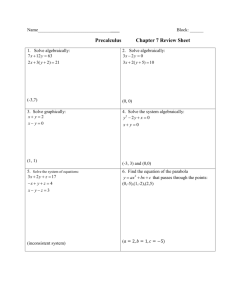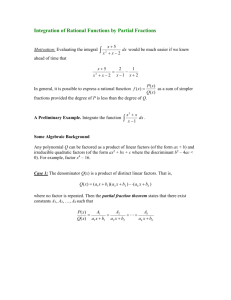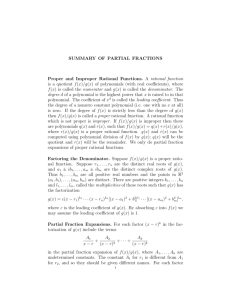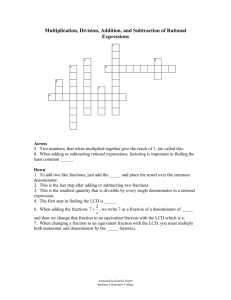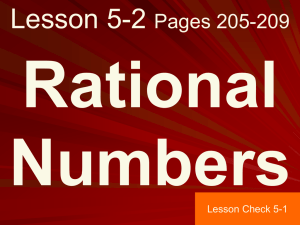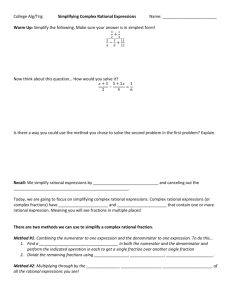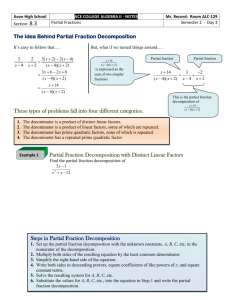Sec 12.4
advertisement
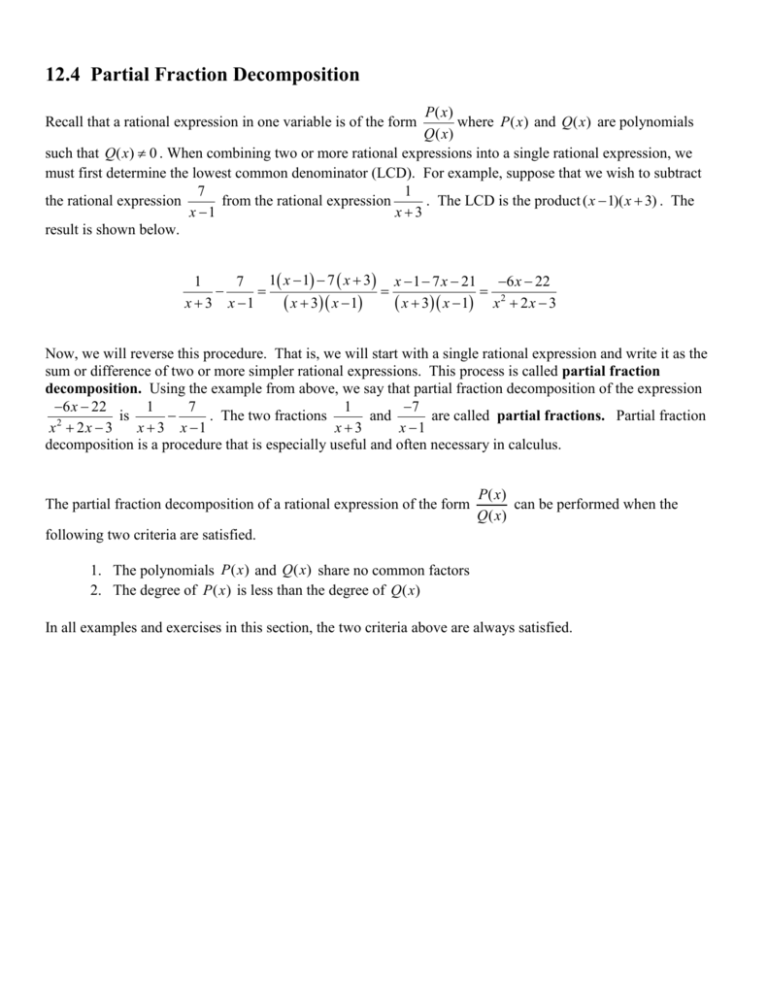
12.4 Partial Fraction Decomposition P( x) where P ( x ) and Q ( x) are polynomials Q( x) such that Q( x) 0 . When combining two or more rational expressions into a single rational expression, we must first determine the lowest common denominator (LCD). For example, suppose that we wish to subtract 7 1 the rational expression from the rational expression . The LCD is the product ( x 1)( x 3) . The x 1 x3 result is shown below. Recall that a rational expression in one variable is of the form 1 x 1 7 x 3 x 1 7 x 21 6 x 22 1 7 x 3 x 1 x 3 x 1 x 3 x 1 x 2 2 x 3 Now, we will reverse this procedure. That is, we will start with a single rational expression and write it as the sum or difference of two or more simpler rational expressions. This process is called partial fraction decomposition. Using the example from above, we say that partial fraction decomposition of the expression 6 x 22 1 7 1 7 is . The two fractions and are called partial fractions. Partial fraction 2 x 3 x 1 x 1 x3 x 2x 3 decomposition is a procedure that is especially useful and often necessary in calculus. The partial fraction decomposition of a rational expression of the form P( x) can be performed when the Q( x) following two criteria are satisfied. 1. The polynomials P ( x ) and Q ( x) share no common factors 2. The degree of P ( x ) is less than the degree of Q ( x) In all examples and exercises in this section, the two criteria above are always satisfied. P( x) where Q ( x) has Only Distinct Linear Factors Q( x) P( x) Recall that a linear factor is an expression of the form ax b . If the denominator of is the product of n Q( x) P( x) distinct linear factors, then the partial fraction decomposition of will be of the form Q( x) An A1 A2 P( x) Q( x) a1 x b1 a2 x b2 an x bn Objective 1 Rational Expressions of the Form where A1 , A2 , An are constants to be determined. It is often possible to determine some or all of the constants of the partial fraction decomposition using a "shortcut" method which involves choosing appropriate values of x and substituting those values into the equation found after eliminating the denominators. We choose values of x which will make one of the linear factors equal to zero. This may result in the elimination of one or more of the variables that represent the undetermined constants. We now establish a seven-step procedure for determining the partial fraction decomposition of a rational P( x) expression of the form . Q( x) Steps for Determining the Partial Fraction Decomposition of P( x) Q( x) Step 1. Factor Q ( x) . P( x) on the left-hand side and the correct partial fractions Q( x) with the undetermined constants on the right-hand side. Step 2. Set up an equation with Step 3. Multiply both sides of the equation created in Step 2 by Q ( x) to eliminate all denominators. Step 4*. If possible, choose appropriate values of x to readily solve for one or more undetermined constants. This may conclude the partial fraction decomposition procedure. If not, go on to Step 5. Step 5. Write the polynomial on the right-hand side of the equation found in Step 3 in descending order. Step 6. Equate the coefficients of P ( x ) with the corresponding coefficients of the polynomial on the right-hand side of the equation thus creating a system of equations. Step 7. Solve the system of equations. *Note that although Step 4 usually simplifies the partial fraction decomposition process, it is not necessary.
